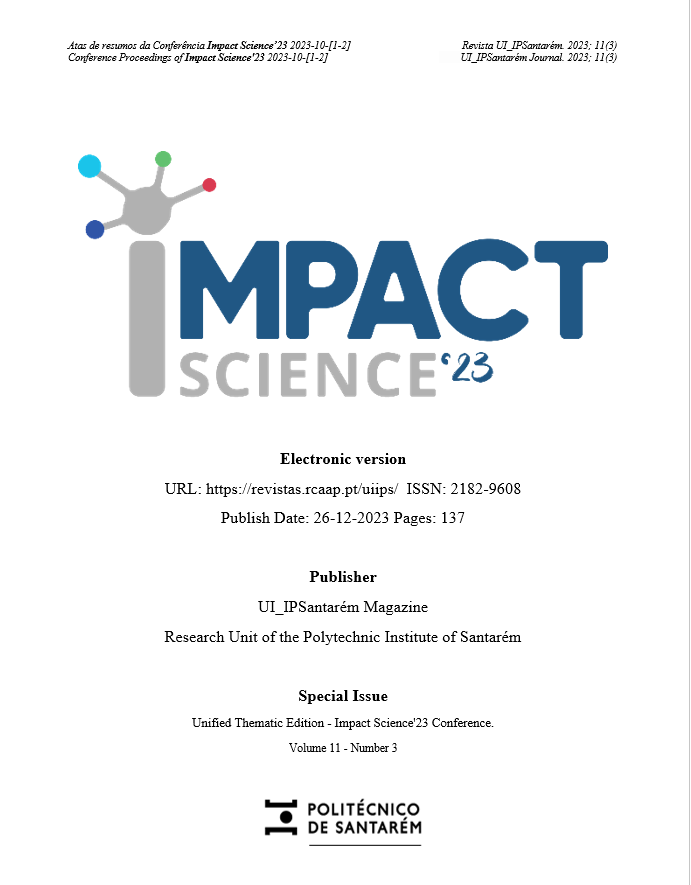Socioprofessional Characterization of Youth Football Coaches in the AF Leiria and AF Santarém Regions
DOI:
https://doi.org/10.25746/ruiips.v11.i3.32435Keywords:
Dados obtidos através de um estudo realizado pelo Gabinete de Futebol da ESDRM para as Associações de Futebol de Leiria e de SantarémAbstract
Over the years, the skills and competencies necessary for the exercise of the role of sports coach have been described and updated. Recognizing that being a coach implies responsibilities, rights and duties in transforming the social context, the socio-professional analysis of these sports agents provides indicators about who they are and what characteristics have the agents responsible for the development of children and young athletes.
Considering socio-professional variables, this study characterized the youth football coaches enrolled in the Football Association of Leiria (AF Leiria) and in the Football Association of Santarém (AF Santarém), in the sports season 2022-2023. According to data provided by the respective associations, the total study population comprises 760 coaches. Subsequently, the study sample consisted of 391 coaches (192 enrolled in AF Leiria and 199 enrolled in AF Santarém). Data collection took place between February and April 2023, having been collected through the online application (Microsoft Forms) of a questionnaire, which included a total of 33 questions (closed answers to the existing options). The instrument presented a structure composed of an informed consent, an socio-professional characterization area (area 1) and a knowledge and technological mastery area (area 2). Asserting a participation of 51.5% of the coaches of the two Associations, it is observed that: (a) less than 5% of the coaches are female; (b) only 8.7% of coaches are over 49 years old; (c) predominantly, the technical qualifications of the coaches are Grade I and II (only 3.5% have Grade III and IV); (d) 44.6% of coaches have higher education, of which 70% are trained in the field of sports sciences; (e) 13.6% of coaches are also federated players; (f) coaches access the TPTD mainly through the FA coaching courses (61.9%); (g) coaches tend to carry out their activity in the district of residence (88% AF Leiria and 87.9% AF Santarém); (h) about half of the coaches do not have any employment relationship with the clubs and only 25% carry out their activity as a service provider; (i) 15.9% of coaches do not earn any type of monthly salary and 46.5% receive between 50 and 150 euros per month; (j) only 1.3% of coaches earn a salary above 800 euros; (k) 34.5% of coaches simultaneously train two (29.4%) or three teams (5.1%); (l) 82.6% of coaches have a main job and 1.5% are students; (m) 55.8% of coaches have children, and 52.1% are married or in a cohabiting couple relationship; (n) 54.2% of coaches are single and do not have children.
In conclusion, when the various variables are correlated, there are no significant differences in the profile of coaches from AF Leiria and AF Santarém, highlighting in both associations the almost non-existent professionalization in the performance of this activity. Being a youth football coach is, essentially, a voluntary activity.
Downloads
Published
How to Cite
Issue
Section
License
Copyright (c) 2023 Vítor Padinha, Eduardo Teixeira, Mauro Miguel, Nuno Coito, Renato Fernandes

This work is licensed under a Creative Commons Attribution-NonCommercial-NoDerivatives 4.0 International License.
Authors publishing in this journal agree to the following terms:
Authors retain copyright and grant the journal the right of first publication, with the article simultaneously licensed under the Creative Commons Attribution License that allows sharing of the work with acknowledgement of authorship and initial publication in this journal.
Authors are permitted to enter into additional contracts separately for non-exclusive distribution of the version of the article published in this journal (e.g., publish in an institutional repository or as a book chapter), with acknowledgment of authorship and initial publication in this journal.
Authors have permission and are encouraged to publish and distribute their work online (e.g., in institutional repositories or on their personal webpage) at any point before or during the editorial process, as this may generate productive changes, as well as increase the impact and citation of the published work.



